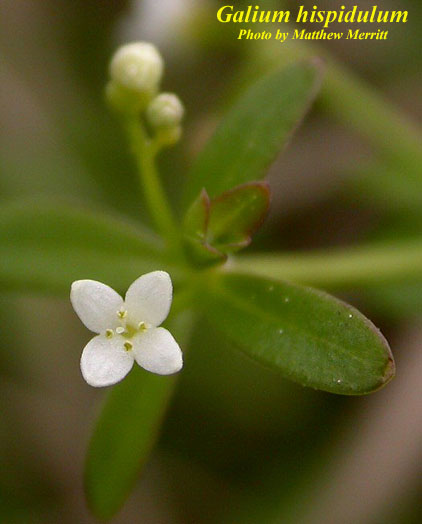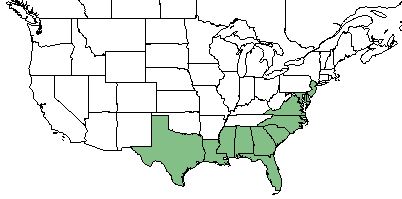Difference between revisions of "Galium hispidulum"
(→Conservation and Management) |
(→Ecology) |
||
| Line 36: | Line 36: | ||
<!--===Fire ecology===--> <!--Fire tolerance, fire dependence, adaptive fire responses--> | <!--===Fire ecology===--> <!--Fire tolerance, fire dependence, adaptive fire responses--> | ||
<!--===Pollination===--> | <!--===Pollination===--> | ||
| − | + | ===Use by animals=== <!--Herbivory, granivory, insect hosting, etc.--> | |
| + | It is a minor source of herbivory for large mammals in its respective communities. <ref name= "USDA"/> | ||
<!--==Diseases and parasites==--> | <!--==Diseases and parasites==--> | ||
Revision as of 17:18, 30 May 2018
| Galium hispidulum | |
|---|---|

| |
| Photo by the Atlas of Florida Plants Database | |
| Scientific classification | |
| Kingdom: | Plantae |
| Division: | Magnoliophyta - Flowering plants |
| Class: | Magnoliopsida - Dicots |
| Order: | Rubiales |
| Family: | Rubiaceae |
| Genus: | Galium |
| Species: | G. hispidulum |
| Binomial name | |
| Galium hispidulum Michx. | |

| |
| Natural range of Galium hispidulum from USDA NRCS Plants Database. | |
Contents
Taxonomic Notes
Synonyms: Galium bermudense L.
Varieties: none
Description
Also known as coastal bedstraw, G. hispidulum is a native perennial forb that is a member of the Rubiaceae family. [1]
Distribution
G. hispidulum is native to the southeast United States, ranging sparsely from east Louisiana and following the coastlines to Maryland and Delaware. [1]
Ecology
Habitat
Use by animals
It is a minor source of herbivory for large mammals in its respective communities. [1]
Conservation and Management
This plant is listed as endangered by the states of Maryland and New Jersey and their Department of Environmental Protection. [1]
Cultivation and restoration
Photo Gallery
References and notes
- ↑ 1.0 1.1 1.2 1.3 USDA Plants Database URL: https://plants.usda.gov/core/profile?symbol=GAHI